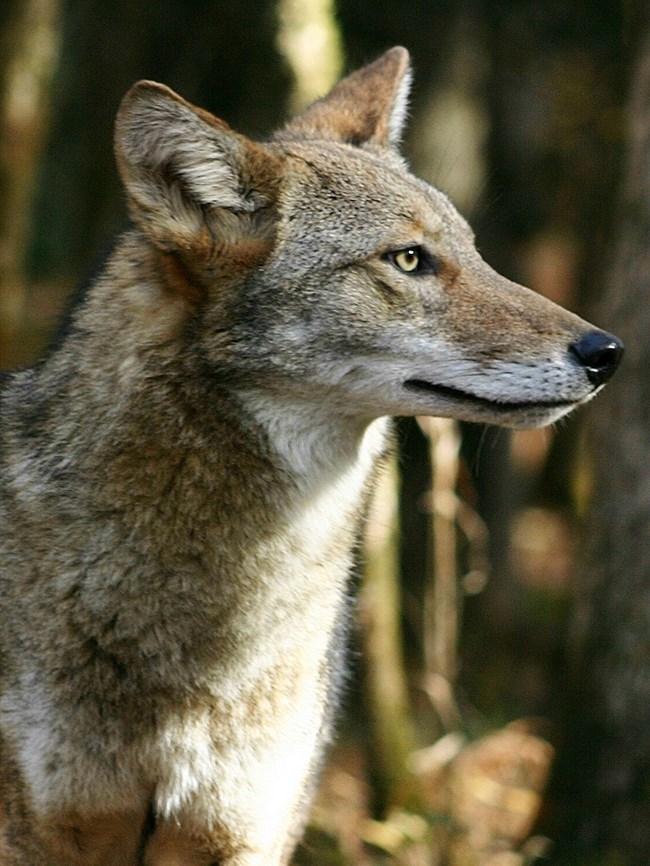Last updated: March 15, 2022
Article
Coyotes at Fredericksburg & Spotsylvania NMP
Coyotes have the gift of seldom being seen; they keep to the edge of vision and beyond, loping in and out of cover on the plains and highlands. And at night, when the whole world belongs to them, they parley at the river with the dogs, their higher, sharper voices full of authority and rebuke. They are an old council of clowns, and they are listened to.
N. Scott Momanday (Kiowa poet)

NPS Photo / Great Smoky Mountains National Park
Usually shy and elusive, coyotes can be found in rural and urban areas, and maintain territorial family units consisting of a mated pair, pups and offspring from previous litters. They have a range of anywhere between 2 – 30 square miles, depending on availability of food. As omnivores, coyote’s will eat almost anything (plants or animals). Up to 70% of a coyotes diet consists of small mammals, with the remaining 30% consisting of a combination of fruits, vegetables, eggs, and other available items, including garbage in more urban and developed areas.
Coyotes prefer traveling through and hunting in open woodlands, meadows, forest edges, and riparian corridors. Small woodlots, fence rows, and brushy or overgrown habitat offer cover and foraging opportunities. The landscape at Fredericksburg and Spotsylvania National Military Park includes many of these features making it an excellent area for coyote to frequent.
Often considered nocturnal, coyotes are crepuscular – most active around dawn and dusk. During spring and early summer they are quite active during daylight hours gathering food for growing pups. One of the most vocal mammals in North America, coyotes use howls, short barks, yelps, whines and growls to communicate.

NPS Photo / Prince William Forest Park
Coexisting with Coyotes
The best way to prevent conflicts between people and coyotes is to prevent them from becoming accustomed to people. If coyotes consider people as suppliers of food, the longer they are likely to stay and the more likely they are to become bolder and unafraid of people. Everyone can help by discouraging coyotes from using and frequenting areas used by humans.
Best practices include:
- Keep pets on their leash
- Treat coyotes, and all wildlife, with respect.
- Stay with small children and pets.
- Do not leave garbage or food waste around (make sure it is carried out or disposed of in a appropriate garbage bin).
If you encounter a coyote while in the park:
- Do not run and do not turn your back to the coyote.
- Back away slowly while facing the coyote.
- Make loud noises – yelling, whistling, etc.
- Wave arms above your head.
- As a last resort, throw inedible objects (sticks, stones, etc.) in the direction of the coyote.
- Let park staff know about the incident (phone call or stop in the visitor center).
And lastly, educate kids and other who may be with you! Be sure they understand, just like with strange dogs, not to approach coyotes and to follow these practices.
Coyote in Virginia
The coyote was originally native to the great plains and arid southwest of the US, western Canada, and Mexico. As the population of the United States expanded westward, the landscape changes along with the elimination of large predator species likely helped the coyote expand its range eastward. The more northern populations of coyotes interbred with gray wolves during their migration while southern migrating populations interbred with red wolves. These two populations ultimately merged in Virginia beginning in the 1950’s. Hunt clubs and other hunting operations also brought and released coyote in Virginia. Coyotes now populate every county in Virginia.
